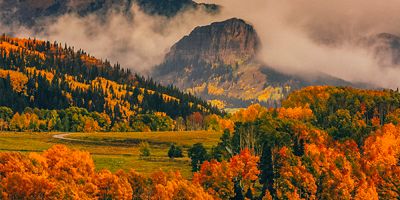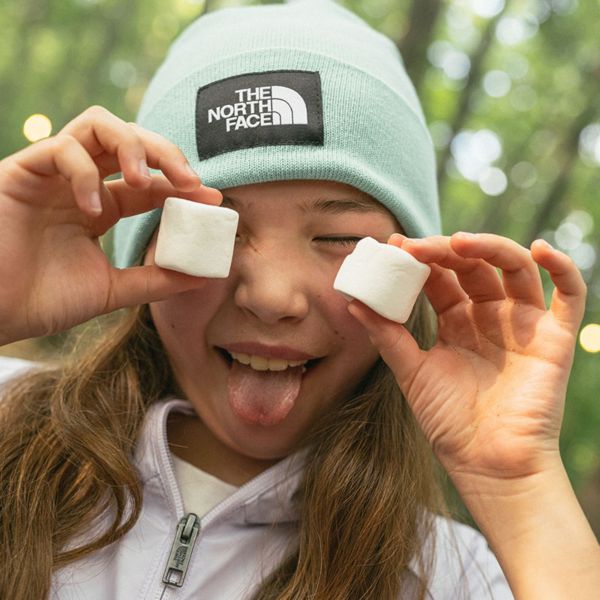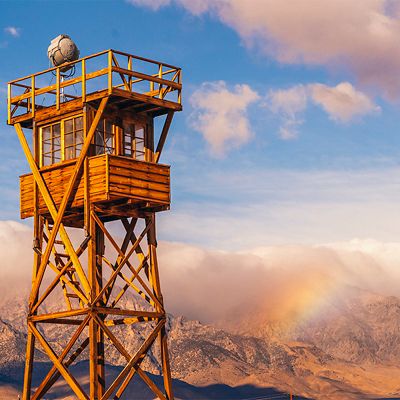Car Camping Best Bets
Best for Quiet Camping: Indian Creek Campground
This peaceful campground is nestled in a forest on the north end of the park, 8 miles south of the busy Mammoth Hot Springs area. From the campground, enjoy views of the Gallatin Mountains, including 10,969-foot Electric Peak. Access the area’s hiking trails, like the Bighorn Pass Trail, and fish on the nearby Gardner River and multiple creeks. This is a quiet campground in contrast to many of the park’s large, bustling tent and RV campgrounds. It’s first-come, first-served here, with 70 sites available. More info: nps.gov/yell/
Great for Fishing, Families, and Old Faithful: Madison Campground
This large campground near the West Yellowstone entrance lies along the Madison River and near the junction of the Gibbon, Firehole, and Madison rivers, offering options aplenty for outstanding fishing that will make you feel like you’re casting line in the 1992 classic A River Runs Through It. Meadows teeming with wildflowers in the spring and bugling elk in the fall, wide and flat campground roads where kids like to ride bikes, and close access to Old Faithful, just 16 miles south: There are more than enough reasons to choose this campground as your park-adventure basecamp. Its 278 sites are reservable through Yellowstone National Park Lodges. More info: nps.gov/yell/
Best for Canyon and Hiking Access: Canyon Village Campground
The southeast part of Grand Loop Road offers access to the Grand Canyon of Yellowstone, the 1,200-foot-deep, 20-mile-long canyon with Upper and Lower Falls of the Yellowstone River, plus the overlooked 129-foot Crystal Falls in between. This campground offers the best access to the canyon and all its great hiking trails, as well as convenient proximity to Canyon Village, with laundry and shower facilities, a large general store, and a Visitor Education Center. Its 273 sites are reservable through Yellowstone National Park Lodges. More info: nps.gov/yell/
Best for Peace and Quiet (Plus Wildlife Sightings): Slough Creek Campground
This campsite sits at the end of a 2-mile dirt road in the northeast corner of the park, making it much more quiet than some of the busier campgrounds. (It also doesn’t allow generators.) It’s a small campground situated in a sage meadow along Slough Creek, just north of the Lamar Valley, which is famous for its abundant wildlife, including bison, bears, and wolves. Due to its remote location, stargazing at this quiet site is fantastic on a clear night. Its 23 sites are reservable through recreation.gov. More info: nps.gov/yell/
Best Basecamp for Geyser-viewing: Norris Campground
Norris is located in the central/northwest region of the park, which has thermal activity dating back 115,000 years, plus bison that regularly roam about. This campground offers quick and easy access to the Norris Geyser Basin and its steaming pools and features, including the Echinus Geyser and the Steamboat Geyser, which spurts to 400 feet, making it the tallest geyser in the world. The campground is mostly set within a lodgepole pine forest, with the Gibbon River flowing nearby. From here, you’re walking distance from the Museum of the National Park Ranger and can enjoy nightly ranger talks throughout the summer. Its 112 sites are reservable through recreation.gov. More info: nps.gov/yell/
Backpacking Best Bets
Best Easy Hike-In: Grebe Lake Campsite
There are 293 backcountry campsites in Yellowstone, including the four spots on picturesque Grebe Lake. Access these primo lakeside sites via a 3-mile hike with little elevation gain from the Grebe Lake Trailhead near the Canyon Junction on the Norris-Canyon Road. From your basecamp, you’ll be able to explore Cascade Lake 1.9 miles away, or make a big day out of summiting Observation Peak—it’s an 8.8-mile hike with 1,400 feet of elevation gain. Backcountry permit required. More info: nps.gov/yell/
Best for Lake Lovers: Shoshone
The park’s second-largest body of water (behind Lake Yellowstone), Shoshone Lake and its black-sand shores offer a secluded dream for water lovers. There are multiple campsites around the lake, including North Narrows and South Grizzly Beach. Swim, fish, or boat (if you can carry your inflatable or packable paddlecraft there) after hiking 3 miles in from the Delacy Creek Trailhead, 4 miles via the Shoshone Dogshead Trailhead, or 8.5 miles from the Howard Eaton Trailhead. Backcountry permit required: nps.gov/yell










